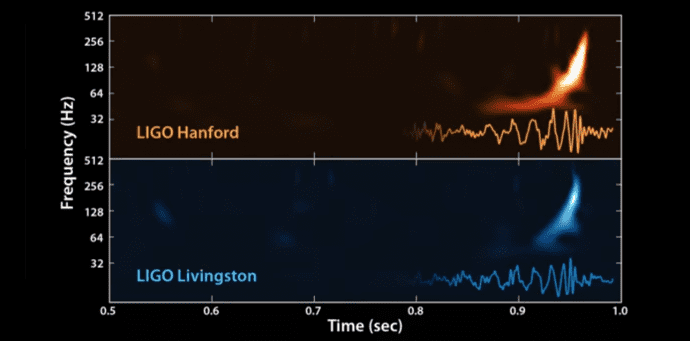WATCH: This is what gravitational waves sound like
The recent announcement of detection of gravitational waves has thrown the scientific community into paroxysms of joy. While gravitational waves are very small to see, they however can be heard with the right kind of instruments.
The social media across the world has buzzed with the sound of two massive black holes colliding, an event so cataclysmic that it converted the mass of three solar systems into pure energy in about a tenth of a second. The aural imprint caused by the gravitational waves of this cataclysmic event is 1.3 billion light years away.
The discovery was made at the advanced Laser Interferometer Gravitational-Wave Observatory (LIGO) in the US.
Gaby González, a physicist and spokesperson for the LIGO Scientific Collaboration, played a waveform at the National Press Club on Thursday morning that amounted to a little soundtrack for our universe. The researchers have converted the tiny, brief variations of gravitational waves into sound and shifted the frequency to make it audible to the human ear.
“We can hear gravitational waves,” González said. “We can hear the universe. That’s one of the beautiful things about this. We are not only going to be seeing the universe. We are going to be listening to it.”
If you listen very closely, you can hear a little chirp. Though that little blip of noise is only a construct, what it represents are tiny contractions and stretchings in spacetime, the very fabric of the universe that resulted from two massive black holes colliding.
The signals recorded by LIGO were converted to sound waves. In the first part of the video, you hear the sound wave frequencies that exactly match the frequencies of the gravitational waves. In the second part of the video, the sounds have been played at higher frequencies that better fit the human hearing range.
“What we have done is taken the real signal and shifted it a bit in frequency, but it is still the real signal,” said González.
Becky Ferreira explains over at Motherboard, “What the observatory picked up was a minute gravitational distortion as the wave tripped the ribbon of laser light within LIGO’s vast tunnels. It only lasted for 20 milliseconds, and the frequencies were measured with a precision equal to the width of a human hair over four light-years.”
